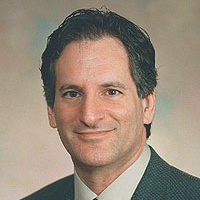Brief of ICLE and Law & Economics Scholars in Deslandes v. McDonald’s
Interest of Amicus Curiae[1]
The International Center for Law & Economics (“ICLE”) is a nonprofit, non-partisan global research and policy center aimed at building the intellectual foundations for sensible, economically grounded policy. ICLE promotes the use of law and economics methodologies to inform public policy debates and has longstanding expertise in antitrust law.
Amici also include twenty scholars of antitrust, law, and economics at leading universities and research institutions across the United States. Their names, titles, and academic affiliations are listed in Appendix A. All have longstanding expertise in antitrust law and economics.
Amici respectfully submit that their amicus brief will aid the Court in reviewing the order of dismissal by explaining that Plaintiffs did not plead and could not prove any plausible product or geographic market. This is a point that Plaintiffs attempt to elide in their appellate brief that warrants this Court’s attention. The foundation of almost every antitrust claim is a plausible market definition, yet Plaintiffs’ claims in this case are premised on a labor market—limited to one company (McDonald’s), but nationwide in scope—that has no basis in economic reality.
In addition, amici explain why Plaintiffs’ claims are subject to rule of reason scrutiny. This case involves a vertical, intrabrand restraint between McDonald’s and its franchisees, which promoted interbrand competition. It was not a naked restraint on trade, but rather an ancillary restriction that furthered McDonald’s procompetitive goal of creating a strong and stable brand. Treating such a restraint as per se unlawful, as Plaintiffs ask this Court to do, would stifle the type of legitimate cooperation that facilitates output and would ultimately harm consumers.
INTRODUCTION AND SUMMARY OF ARGUMENT
Until 2017, McDonald’s franchise agreements included a provision that prevented franchisees from hiring workers from other McDonald’s restaurants within the six-month period immediately following the workers’ prior employment. Two employees sued McDonald’s in a putative class action, alleging that this provision—which the parties refer to as “Paragraph 14”—was an unlawful agreement under Section 1 of the Sherman Act, 15 U.S.C. § 1, that harmed competition by artificially suppressing wages. Plaintiffs argued that Paragraph 14 was per se unlawful or failed “quick look” review; on appeal (but not below), Plaintiffs also argue that Paragraph 14 fails scrutiny under the rule of reason. Brief of Appellants at 31-33, Deslandes v. McDonald’s USA LLC, No. 22-2333 & 22-2334 (7th Cir.) (“App. Br.”).
Under the rule of reason, Plaintiffs had the burden to plead and prove the relevant product and geographic markets within which McDonald’s allegedly exerted market power and caused the alleged anticompetitive effects. Plaintiffs’ claim has always been premised—explicitly or implicitly—on a single-brand and nationwide labor market for McDonald’s employees. (§ I.A). Although Plaintiffs shy away from that market on appeal, it is the only one discernible from the record and the only one on which Plaintiffs’ claims could possibly be premised. But that market is fatally flawed along the two axes that typically delineate antitrust markets: (1) geography and (2) products or services.
First, the relevant labor market is local: there is no national market for fast-food restaurant employees, as Plaintiffs suggest. Low-skilled restaurant workers sell their labor in local markets, primarily to avoid long commutes or relocation. The economic (and commonsense) reality is that a person applying for a McDonald’s job in Chicago, Illinois is not also looking for a McDonald’s job in Florida or Montana; nor are local McDonald’s restaurants recruiting employees nationwide. (§ I.B). Second, there is no McDonald’s-specific labor market for restaurant employees. McDonald’s restaurants compete vigorously with other fast-food and quick-service restaurants—and with firms outside the restaurant industry—for labor. Empirical economic evidence refutes Plaintiffs’ arguments to the contrary. (§ I.C).
Further, Plaintiffs cannot avoid the rule of reason (or their burden to plead and prove a relevant market) by invoking per se scrutiny. (§ II). First, Paragraph 14 was not a horizontal restraint; it was a vertical, intrabrand restraint between McDonald’s and its franchisees. (§ II.A). Second, Paragraph 14 was not a naked restraint on trade but was instead “ancillary” to McDonald’s procompetitive endeavor of developing its brand. (§ II.B). Third, Paragraph 14 does not fall in the narrow class of restrictions—like price fixing—universally condemned as anticompetitive. Nor are there sufficient economic studies showing that restraints like Paragraph 14 have a demonstrable and negative impact on trade, such that there would be a basis to depart from the default rule of reason standard. (§ II.C).
I. There is no Nationwide, Single-Brand Market for McDonald’s Employment
Market definition enables courts to determine whether firms possess market power capable of restricting competition. The market provides a locus for the assessment of that market power and of whether that power has been exploited to harm competition and consumers.
Accordingly, “courts usually cannot properly apply the rule of reason without an accurate definition of the relevant market.” Ohio v. Am. Express Co., 138 S. Ct. 2274, 2285 (2018). The rule of reason requires a court to assess the “actual effect” that a defendant’s conduct has on competition. Id. at 2284 (quoting Copperweld Corp. v. Indep. Tube Corp., 467 U.S. 752, 768 (1984)). And without knowing the relevant market, “there is no way to measure the defendant’s ability to lessen or destroy competition.” Id. at 2285 (quoting Walker Process Equip., Inc. v. Food Mach. & Chem. Corp., 382 U.S. 172, 177 (1965)).[2]
A. Plaintiffs Must Allege and Prove a Relevant Market
In the district court, Plaintiffs did not clearly define the relevant market in which Paragraph 14 allegedly harmed competition; and that failure defeats their claim under the rule of reason. See Agnew v. Nat’l Collegiate Athletic Ass’n, 683 F.3d 328, 347 (7th Cir. 2012) (affirming dismissal where “[p]laintiffs appear to have made the strategic decision to forgo identifying a specific relevant market,” and rejecting “post hoc arguments attempting to illuminate a buried market allegation”).
Plaintiffs are wrong to assert that they can rely on “direct evidence” of anticompetitive harm to avoid establishing a relevant market. App. Br. at 31. Even if they had such evidence, Plaintiffs would still have the burden to sketch out the “rough contours” of the relevant market and to show that McDonald’s commanded a substantial share of that market. See Republic Tobacco Co. v. N. Atl. Trading Co., 381 F.3d 717, 737 (7th Cir. 2004) (“[I]f a plaintiff can show the rough contours of a relevant market, and show that the defendant commands a substantial share of the market, then direct evidence of anticompetitive effects can establish the defendant’s market power[.]” (emphases added)). But Plaintiffs never inform this Court what product or geographic markets are involved here, even “roughly” speaking. Accordingly, Plaintiffs’ references to their supposed “direct evidence” of anticompetitive harm, without regard to any market boundaries, App. Br. at 31-32, do not suffice.[3]
Rather than define a market, Plaintiffs fault the district court for assuming that their claim “depended upon a single, nationwide geographic market.” App. Br. at 31. But that assumption came not from the district court but from Plaintiffs themselves—as that was the only market potentially discernible in their complaints. See First Am. Compl. ¶¶ 1, 117; Turner Compl. ¶¶ 109-13 (implying a single-brand, nationwide market). While Plaintiffs try to obscure their single-brand, nationwide market for McDonald’s labor on appeal, that is the only one that Plaintiffs rely upon in their opening brief, albeit obliquely. See App. Br. at 31 (arguing that Paragraph 14 “suppressed worker pay nationwide”); id. at 33 (arguing that McDonald’s and its franchisees were the “discrete group of buyers” that were able to “hold down wages”).
Plaintiffs’ proposed market is both implausible and economically unsound. Antitrust markets typically have two dimensions: (1) a geographic market and (2) a product or services market. See Brown Shoe Co. v. United States, 370 U.S. 294, 324 (1962). Plaintiffs’ single-brand, nationwide market fails along both dimensions.
B. The Relevant Market is Local, not National
First, to identify a relevant geographic market, the court must make a “careful selection of the market area in which the seller operates, and to which the purchaser can practicably turn for supplies.” Republic Tobacco, 381 F.3d at 738 (citing Tampa Elec. Co. v. Nashville Coal Co., 365 U.S. 320, 327 (1961)). In labor markets, the “sellers” are workers or job applicants selling their services (like Plaintiffs), and “purchasers” are employers (like McDonald’s) that compete with other firms to hire, employ, and retain the workers.
As the district court correctly found, low-wage restaurant employees sell their labor locally and McDonald’s restaurants compete only with geographically proximate employers to purchase that labor. See D.E. 372 (“Class Cert. Op.”) at 20-21. Fast-food and quick-serve restaurant employees are generally low-skilled and/or entry-level workers who “are looking for a position in the geographic area in which they already live and work, not a position requiring a long commute or a move.” Id. at 21.
While some employees might relocate for other reasons first, and then seek a restaurant job, it is not economically plausible that they would “search long distances for a low-skill job with the idea of then moving closer to the job.” Id. The costs of relocation—in economic terms, the “search” costs and “transition” costs—would far exceed any cost-adjusted increases in pay and benefits.
In practical terms, an hourly McDonald’s worker in Apopka, Florida who does not otherwise desire to move to California would not uproot her life, and leave family and friends, for a McDonald’s job in Los Angeles—even if the Los Angeles franchisee offers to raise her wages a few dollars per hour. The employee has many alternative opportunities that do not require relocation and, in any event, the higher cost of living in Los Angeles would negate the benefits of the wage increase. The total costs of relocation likely outweigh the marginal wage gain.
For similar reasons, an employee is unlikely to commute long distances—for example, from Urbana to Chicago, Illinois—to work at a McDonald’s, even if the McDonald’s in Chicago pays slightly higher wages than the one in Urbana. A marginal wage increase would not offset the time and “commuting costs”—i.e., gas and mileage. See Phillip E. Areeda & Herbert Hovenkamp, Antitrust Law: An Analysis of Antitrust Principles and Their Application ¶ 552 (5th ed. 2022) (explaining that “commuting costs” limit a supplier’s ability to operate in a distant geographic market).
Nor is it plausible that a McDonald’s franchisee in Apopka, Florida would recruit workers nationwide. That franchisee also faces search costs in the labor market. It must advertise its job openings, hire recruiters, and interview applicants, among other things. It would not be worthwhile to incur the substantial costs of a nationwide search for employees, when those employees would likely remain at the job for a relatively short time, and when there are many local workers with similar skills who could fill the role.
To be sure, some highly skilled employees in other industries—for example, corporate executives or professional athletes—undoubtedly search for high-paying or prestigious jobs nationwide. And their potential employers recruit nationwide. For those types of job-seekers, their decisions turn on the scarcity of those jobs, the substantial personal and financial investments (“sunk costs”) they have made to be qualified for such positions (which essentially “lock” them into the nationwide market), and the high salaries or total compensation that make relocation worthwhile. Likewise, for the hiring firm, the search is justified by the small number of qualified candidates, widely distributed across the country, and by the expected benefits. For example, it would be worthwhile for a firm to search far and wide for a new CEO, knowing that there are only a few people in the country with the skills and leadership ability to lead the company out of financial troubles.
These rarefied exceptions confirm that the vast majority of labor markets are “geographically quite small.” Herbert Hovenkamp, Competition Policy for Labour Markets, U. Pa. Inst. L. & Econ. ¶ 12 (May 17, 2019). Applicants for low paying and fungible jobs have fundamentally different incentives than do corporate executives and professional athletes. The former do not have adequate incentives for a national search, given the substantial costs, plus relocation or long-distance commuting.
These intuitive points are supported by data and established economic methods. Several recent economic studies demonstrate that, “in a wide range of industries[,] geographic markets for employment are rather small,” and that this is “particularly true of low-wage employees.” Areeda & Hovenkamp, supra ¶ 550b (collecting studies). One empirical study shows that “more than 80% of [all] job applications occur where the applicant and prospective employer are within the same ‘commuting zone.’” Ioana Marinescu & Roland Rathelot, Mismatch Unemployment and the Geography of Job Search, 10(3) Am. Econ. J. Macro. 42 (2018).
The U.S. Bureau of Labor Statistics (“BLS”) employs a methodology that confirms the district court’s findings with respect to localized markets. When BLS collects employment and unemployment statistics, it examines the “economically integrated geographic area within which individuals can reside and find employment within a reasonable distance or can readily change employment without changing their place of residence.” BLS, Local Area Unemployment Statistics Geographic Concepts, (Mar. 20, 2020). According to BLS, metropolitan and micropolitan areas are the “major” “labor market areas” (LMAs)—not the country as a whole. Id. The balance of the nation’s LMAs comprise a larger number of smaller geographic areas. Id. BLS identifies thousands of these small LMAs for each decennial census, based on its analysis of highly localized commuting flows. Id; see also Data.Gov, Commuting Zones and Labor Market Areas, (Nov. 10, 2020).
Plaintiffs’ own expert witnesses acknowledged that a nationwide market was implausible in this case. Dr. Peter Capelli conceded that restaurant workers are employed in local geographic markets, defined by commuting distances. Class Cert. Op at 22-23 (citing Capelli Dep. at 235-36, D.E. 302-1 at 608-09) (“My testimony is that for the restaurant employees in particular, the crew employees, there may be labor markets of different geographic size and that the key issue there might not even be size, it might be commuting distance.”). And Dr. Hal Singer calculated that only 8% of McDonald’s employees commute ten or more miles to work. Id. at 23 (citing Singer Rep. ¶ 64, D.E. 271-5 at 54).
Other evidence in this case also demonstrates that market conditions vary substantially by location. McDonald’s own guidelines on worker pay account for local conditions. D.E. 302-19 at -997; D.E. 302-19 at -432, -444; see also D.E. 380 ¶¶ 40-50. The guidelines do not set forth a single, rigid nationwide formula—which one would expect to see if McDonald’s understood that its franchisees were competing for labor nationwide.
As this Court recently explained, “[t]he antitrust statutes require a ‘pragmatic’ and ‘factual’ approach to defining the geographic market,” and “[t]he market must ‘correspond to the commercial realities of the industry.’” Sharif Pharmacy, Inc. v. Prime Therapeutics, LLC, 950 F.3d 911, 917 (7th Cir. 2020) (quoting Brown Shoe, 370 U.S. at 336). Plaintiffs’ proposed nationwide market is neither pragmatic nor factual. It ignores the obvious commercial reality that local McDonald’s franchisees do not compete nationwide for low-skilled labor, and it ignores the empirical evidence that McDonald’s employees (and similarly situated low-wage employees) do not commute long distances or relocate for these types of jobs.
C. The Market is not McDonald’s-Specific
The outer boundaries of a product market are defined by the “reasonable interchangeability of use or the cross-elasticity of demand between the product itself and substitutes for it.” Sharif Pharmacy, 950 F.3d at 918 (quoting Brown Shoe, 370 U.S. at 325). Cross-elasticity of demand, here, reflects the degree to which a significant increase or decrease in wages paid by alternative employers changes the number of workers hired or hours worked (quantity demanded) at the employer in question. In the classic company town, the cross-elasticity of demand is zero. When there are substitutes, it is positive, indicating that “consumers would respond to a slight increase in the price of one product by switching to another product.” Todd v. Exxon Corp., 275 F.3d 191, 201-02 (2d Cir. 2001); IIA Areeda & Hovenkamp, supra ¶ 562a.
In a “buyer-side” labor monopsony, such as Plaintiffs have alleged, the market is defined not by the competing sellers (employees), but by the availability of competing buyers (employers). See Todd, 275 F.3d at 201 (citing Roger D. Blair & Jeffrey L. Harrison, Antitrust Policy and Monopsony, 76 Cornell L. Rev. 297, 297-301, 308 (1991)). Thus, the key question is whether employees would see the various employers as reasonable substitutes for one another, such that they would respond to compensation changes by seeking those substitutes. Id. If so, then any of the reasonable substitutes must fall within the market definition for the plaintiff’s market to be plausible. See Rock v. Nat’l Collegiate Athletic Ass’n, 928 F. Supp. 2d 1010, 1021 (S.D. Ind. 2013) (“Plaintiffs’ proposed market is impermissibly narrow because it ignores the existence of [substitutes].”).
In a properly defined labor market, the greater the availability of substitute employers, the less “market power” each employer can have, as employees can go elsewhere when one employer lowers its wages or fails to meet wage increases by others. When a labor market is highly concentrated, by contrast, the employer may be able to exert monopsony buying power. For example, a pure labor monopsony might exist in the classic “company town,” where there is only one large employer—such as a lumber mill or coal mine—that has wide discretion to set wages without employees leaving for other jobs. Those employees are, in effect, “locked in” to selling their labor to the single employer. Cf. Eastman Kodak Co. v. Image Tech. Servs., Inc., 504 U.S. 451, 472-73, 476 (1992) (seller can “lock in” customer to aftermarket for equipment repairs, if customers already purchased equipment in the foremarket and switching costs are high). In the modern economy, however, such examples are rare; and the market for hourly restaurant employees bears no resemblance to a company town.
Nevertheless, Plaintiffs here allege that McDonald’s is a monopsony buyer of labor—not just in a highly concentrated market, but in a single-brand market for McDonald’s labor. App. Br. at 7. In other words, McDonald’s allegedly has monopsony power to set the wages at which it hires and retains employees because employees (or applicants) generally would not see any non-McDonald’s employment opportunities as reasonable substitutes.
Plaintiffs’ theory thus depends upon implausible assumptions about McDonald’s market power and the elasticity of demand: that substantial wage increases by alternative local employers—including, but not limited to, fast food or quick-service restaurants like Wendy’s, Burger King, KFC, and Subway—would have little or no impact on the ability of a local McDonald’s franchise to hire or retain workers at a given antecedent wage. That is not only implausible in this case, but there is no evidence that it is the norm across low-wage labor markets. See, e.g., Jordan D. Matsudaira, Monopsony in the Low-Wage Labor Market? Evidence from Minimum Nurse Staffing Regulations, 96(1) Rev. Econ. & Statistics 92, 102 (2014) (empirical data in low-wage labor markets are “difficult to reconcile with the notion that low-wage labor markets such as those for fast food workers are monopsonist”).
These assumptions underlying Plaintiffs’ alleged market defy basic economic principles and common sense. Courts are highly skeptical of alleged single-brand markets with no substitutes at all, as those markets are almost always artificial and litigation-driven. See, e.g., Sheridan v. Marathon Petroleum Co., 530 F.3d 590, 595 (7th Cir. 2008) (rejecting single-brand market); Todd, 275 F.3d at 200 & n.3 (“Cases in which dismissal on the pleadings is appropriate frequently involve . . . failed attempts to limit a product market to a single brand, franchise, institution, or comparable entity….” (collecting cases)).
McDonald’s does not have monopsony power in any relevant market because, from an employee’s perspective, there are many reasonable substitutes in the geographic areas in which a given McDonald’s franchisee operates. McDonald’s franchisees compete vigorously for labor with other local employers within and without the quick-service industry. As the district court observed, there are multitudes of adequate, substitute employers for low-wage employees—including (1) other quick-serve restaurants, like Burger King, Wendy’s, Arby’s, KFC, Taco Bell, Chick-fil-A, Chipotle, and Jimmy John’s; (2) other restaurants, like Applebee’s; (3) larger retailers, like Walmart, Sam’s Club, and Costco; and (4) a host of other businesses like grocery stores and hotels. Class Cert. Op. at 21-22.
Even narrowing substitutes to just quick-service restaurants, the district court found numerous (even hundreds of) substitute employers within close geographic proximity to each of the named Plaintiffs, and the number of alternative quick-service restaurants dwarfed the number of McDonald’s franchises in the same area. Id. at 6.
Plaintiffs’ claim of monopsony buying power thus depends on the far-fetched premise that McDonald’s can suppress wages, notwithstanding hundreds of non-McDonald’s quick-service restaurants—and numerous other alternative employers—near Plaintiffs and other putative class members. In reality, if McDonald’s lowered its wages (or other employers raised theirs, and McDonald’s did not match), McDonald’s would lose its supply of labor. See Madison 92nd St. Assocs., LLC v. Courtyard Mgmt. Corp., 624 F. App’x 23, 29 (2d Cir. 2015) (in labor markets involving entry-level work, “it is beyond doubt that [employers] would have to increase their wages to retain any employees” if nearby employers “suddenly doubled the wages they paid to their employees”).
To evade this economic and commonsense reality, Plaintiffs and their expert, Dr. Singer, attempted to attribute monopsony power to McDonald’s as a structural feature of the labor economy in general. In other words, in their view, all employers of low-wage workers enjoy monopsony power in their labor markets, and, ipso facto, McDonald’s has market power in a single-brand market nationwide (or in each and every local labor market) because it employs low-wage workers.
In his expert report, for example, Dr. Singer characterizes economic literature as arguing that the ability of firms to suppress wages is “surprisingly common throughout the economy.” D.E. 271-5 (Singer Rep. ¶ 17). Thus, he stated, it “would be consistent with this literature . . . [t]hat McDonald’s-branded restaurant owners also face a low elasticity of labor supply[.]” Id.; see also id. ¶ 39 (“In light of [the economic literature], it is likely that both McDonald’s Franchisees and the McOpCos would continue to exercise some degree of monopsony power over their employees, even in the absence of the No-Hire Agreement.”).
On appeal, Plaintiffs point to Dr. Singer’s opinions about labor monopsonies, in general, as evidence that McDonald’s, specifically, had market power and could suppress wages in a proposed single-brand market for McDonald’s labor. See App. Br. at 30-33 (arguing that Plaintiffs “buttressed their direct proof of detrimental effects with substantial economic scholarship showing that low?wage employers, including those in the fast food sector, possess market power over their employees”); see also id. at 51 (arguing that “an overview of economic research demonstrat[es] that employers exercise significant monopsony power over their employees”).
Whatever the “structural” features of broader markets—comprising many low-wage employers and firms—those features say nothing about one company’s individual market power and ability to harm competition in a properly defined market. In any event, even if such a sweeping claim could suffice to carry one’s burden of proof as to a specific defendant, the claim is still inaccurate and inconsistent with the economic features of the quick-service restaurant industry. That industry is characterized by low barriers to entry for employees, extremely high turnover rates, and substantial wage growth.[4]
First, “[f]ood and beverage serving and related workers typically have no requirements for formal education or work experience to enter the occupation.” BLS, Occupational Outlook Handbook, Food and Beverage Serving and Related Workers, (Sept. 8, 2022). Unlike corporate executives and professional athletes, fast-food restaurant employees do not make large investments to obtain restaurant positions. Thus, they are not “locked in” to any one restaurant or even the restaurant industry, contrary to Plaintiffs’ argument that there are “high switching costs” for restaurant employees. App. Br. at 34.
Indeed, recent data show that the turnover in the quick-service sector is incredibly high, at around 144%—which means that if a restaurant has a total of 30 people on staff at any given time, it faced about 43 departures in the last year alone. See Daily Pay, The Turnover and Retention Rates for QSR Businesses (Nov. 15, 2022). BLS also recently found that the seasonally-adjusted “quit rate” for the accommodation and food services industry was 5.8% as of October 2022—higher than any other industry. See BLS, Economic News Release, Job Openings and Labor Turnover, Table 4, Quits levels and rates by industry and region, seasonally adjusted (Jan. 4, 2023). When restaurant workers quit, moreover, they frequently leave the restaurant industry altogether, creating high numbers of job openings for new entrants into restaurant sector employment. See BLS, Occupational Outlook Handbook, Food and Beverage Serving and Related Workers, (Sept. 8, 2022).
Moreover, fast-food workers in 2021, on average, benefitted from a 10% wage increase from 2020. See Dominick Reuter and Madison Hoff, A 10% pay increase and 8 other stats show how crazy it is to work in fast food right now, Business Insider (Aug. 24, 2021). Such rapid wage growth undermines Plaintiffs’ claim that monopsony power is a structural feature of the restaurant industry. To the contrary, this wage growth suggests that normal market factors of supply and demand are at play. Cf. Richard A. Epstein, Antitrust Overreach in Labor Markets: A Response to Eric Posner, 15 NYU J. L. & Liberty 407, 432 (2022) (“There is no global evidence, given the chronic fluctuations and frequent shortages, to believe that labor markets are rife with hidden pockets of monopsony power that function as economic black holes.”).
Finally, the most robust study of the relationship between wages and hours worked in fast-food labor markets yielded results that are consistent with competitive labor markets, rather than a monopsony model. See David Neumark and William Wascher, Minimum Wages and Employment: A Case Study of the Fast-Food Industry in New Jersey and Pennsylvania: Comment, 90 Am. Econ. Rev. 1362, 1382 (2000) (critiquing the famous Card & Krueger minimum-wage study using direct data, rather than surveys, and looking at hours worked rather than overall employment; and finding that fast-food employers make wage and hour decisions consistent with “the prediction of the textbook [competitive] model”); see also David Neumark and William L. Wascher, Minimum Wages 106 (MIT Press 2007) (reviewing literature on low-wage restaurant workers and concluding that “the low-wage labor market can be reasonably approximated by the neoclassical competitive model”).
Overall, the empirical data show that the labor markets in which restaurants participate are dynamic and competitive, not dominated by monopsonists with the power to suppress wages at will.
II. Paragraph 14 is Subject to the Rule of Reason
Plaintiffs cannot avoid their burden to plead and prove a market by insisting on per se analysis or even “quick look” review of Paragraph 14. The rule of reason governs Plaintiffs’ antitrust claims with respect to Paragraph 14 for at least three reasons. First, the restriction was a vertical, intrabrand restraint, not a horizontal one. Second, even if it were horizontal, it was still ancillary to the procompetitive franchise agreement. Third, Paragraph 14 does not fall within that narrow class of restrictions—such as price fixing—universally and historically condemned as anticompetitive. See Nat’l Collegiate Athletic Ass’n v. Alston, 141 S. Ct. 2141, 2155-56 (2021) (explaining “spectrum” of antitrust analysis).
As noted above, McDonald’s vigorously competes with numerous firms in both labor markets and the output market. Its competitive efforts have included various intrabrand restraints among its franchisees that foster a strong, consistent brand identity, along with shared marketing and product development. That successful brand identity is what attracts individual franchisees to open and operate McDonald’s restaurants. Because Paragraph 14 was such a vertical restraint, and ancillary to McDonald’s procompetitive objectives, it cannot be per se unlawful. Rather, it is subject to full rule of reason analysis.
A. Paragraph 14 is a Vertical, Intrabrand Restraint
Paragraph 14 is a vertical, not horizontal, restraint. It was conceived and imposed by the franchisor, McDonald’s—not competing franchisees.
In 1955, McDonald’s included in its franchise agreement the predecessor to the Paragraph 14 restriction as part of an initial bundle of brand standards. That original franchise agreement also included limits on, among other things, product offerings and territorial exclusivity, as many franchise agreements do. D.E. 380-20. The terms of the agreement were consistent across franchisees, and were designed, insisted upon, and monitored by McDonald’s itself. Paragraph 14 was not created as part of an agreement among horizontal competitors, nationally or in any particular geographic labor market. Indeed, the large national (and subsequently international) network of McDonald’s franchises did not yet exist when the key elements of the franchise agreement were established.
Plaintiffs suggest the restraint was per se unlawful because corporate-owned restaurants, McOpCos, were horizontal competitors with independently owned franchisees. See App. Br. at 25, 44. In those local markets comprising both McOpCos and independently owned franchises, the district court found the restraint horizontal, but ancillary and subject to the rule of reason. Op. at 9. But the district court also identified vertical aspects to the terms that, in fact, obtain in most geographic markets. Id. at 4-5.
Paragraph 14 was necessarily a vertical restraint in the twenty states in which there were no McOpCo restaurants at all. Class Cert. Op. 17. In the remaining states, Paragraph 14 still operated as a vertical restraint in the local labor markets that had only independently owned franchisees or McOpCos, but not both. In other words, it was impossible for the restraint to operate horizontally on a national level, because the putative competition between independent franchisees and McOpCos could not have occurred in the many labor markets in which there were no McOpCos. Id. (finding that Plaintiffs have “not [ ] put forth evidence that McOpCos compete with franchisees in every part of the United States”).
Vertical restraints, like Paragraph 14, are generally evaluated under the rule of reason because they often foster interbrand competition. Thus, for decades, the Supreme Court has whittled down the types of vertical restraints that are subject to per se condemnation. In 1977, the Court refused to extend per se illegality to vertical non-price restraints, noting that vertical restrictions tend to promote interbrand competition, “the primary concern of antitrust law.” Cont’l T.V., Inc. v. GTE Sylvania Inc., 433 U.S. 36, 49, 52 n.19, 58 (1977). A decade later, the Court observed that “a rule of per se illegality for vertical nonprice restraints was not needed or effective to protect intra brand competition.” Bus. Elecs. Corp. v. Sharp Elects. Corp., 485 U.S. 717, 725 (1988). And, in 2007, the Court repudiated the prohibition of vertical price restraints that it had adopted nearly a century earlier. See Leegin Creative Leather Prods., Inc. v. PSKS, Inc., 551 U.S. 877 (2007) (overruling Dr. Miles Med. Co. v. John D. Park & Sons Co., 220 U.S. 373 (1911), and subjecting vertical price restraints to rule of reason analysis).
In these decisions, the Court repeatedly emphasized that any departure from the rule of reason “must be based on demonstrable economic effect, rather than . . . upon formalistic line drawing.” Bus. Elecs., 485 U.S. at 724; see also Leegin, 551 U.S. at 889 (applying rule of reason in part because “economics literature is replete with procompetitive justifications for a manufacturer’s use of resale price maintenance”).
While Plaintiffs seek a departure from the rule of reason here, economic research confirms that vertical restraints—including franchisor-franchisee restraints—tend to be procompetitive. Reviewing the empirical and theoretical literature on vertical restraints, Lafontaine and Slade observed that:
[T]he empirical evidence concerning the e?ects of vertical restraints on consumer wellbeing is surprisingly consistent. Speci?cally, it appears that when manufacturers choose to impose such restraints, not only do they make themselves better o? but they also typically allow consumers to bene?t from higher quality products and better service provision.
Francine Lafontaine & Margaret Slade, Exclusive Contracts and Vertical Restraints: Empirical Evidence and Public Policy, 10 Handbook of Antitrust Economics 391, 408-09 (Buccirossi ed., 2008); see also Francine Lafontaine & Margaret E. Slade, Transaction Cost Economics and Vertical Market Restrictions—Evidence, 55(3) The Antitrust Bulletin 587 (2010).
The rule of reason is especially appropriate here because Paragraph 14 is not only a vertical restraint, but an intrabrand one as well. And intra-franchise no-hire agreements are fundamentally different from inter-company restraints for two principal reasons.
First, intra-franchise labor restraints do not restrict output or price in the labor market because they do not affect the ability of alternative employers to compete for workers—whether those employers operate other types of quick-service restaurants or any of the myriad establishments that compete for the same pool of lower-skilled workers.
Second, even if McDonald’s did have the ability to confer labor monopsony power on local franchisees (it does not, see infra), it had no economic incentive to do so. Creating local labor monopsonies would suppress wages in those areas. That would reduce the quantity of labor employed and, in turn, suppress output in the downstream product market (i.e., food sales). See, e.g., Herbert J. Hovenkamp, Worker Welfare and Antitrust, __ U. Chi. L. Rev. 1, 10, 13 (2022) (“[T]he demand for labor as an input is closely correlated with the amount of product or service output that the firm is generating.”). But McDonald’s as a franchisor depends on product output for royalties; it has no desire to reduce its royalties by creating dysfunction in the labor market.
Because Paragraph 14 is a vertical and intrabrand restraint, it must be subject to the rule of reason.
B. Paragraph 14 is Ancillary to the Franchise Agreement
Paragraph 14 is also subject to scrutiny under the rule of reason (rather than per se or quick look analysis) because it was “ancillary” to a procompetitive franchise agreement. In other words, there was a clear procompetitive rationale for the entire bundle of vertically imposed restraints embodied in the McDonald’s franchise agreement: brand quality and consistency. Paragraph 14 promoted that larger endeavor and was not a naked restraint on trade.
For example, Paragraph 14 limited the ability of individual franchisees to free-ride on training investments by McDonald’s and other franchisees. That in turn encouraged investment in employee development and training, and in the McDonald’s system and brand more generally. Limits on intrabrand employee raiding foster brand consistency and stability, which also are advantageous for the growth of a nationwide brand. See, e.g., Gregory J. Werden, The Ancillary Restraints Doctrine after Dagher, 8 Sedona Conf. J. 17, 21 (2007).
Plaintiffs nonetheless argue that Paragraph 14 cannot be regarded as ancillary because it was not “reasonably necessary” to the procompetitive goals of the franchise agreement, purportedly demonstrated by the fact that the cessation of the restraint in 2017 was not fatal to McDonald’s franchise system. App. Br. at 23. That argument claims too much and shows too little.
As a legal matter, ancillarity does not require a showing that restraints are strictly necessary, but only that they “may contribute to the success of a cooperative venture.” Polk Bros., Inc. v. Forest City Enters., Inc., 776 F.2d 185, 189 (7th Cir. 1985). A restraint is ancillary, in other words, if, “at the time it was adopted,” it bears a reasonable relationship to the joint venture’s success. Id. (emphasis added); see also Major League Baseball Props., Inc. v. Salvino, Inc., 542 F.3d 290, 339-40 (2d Cir. 2008) (Sotomayor, J., concurring). By pointing to the fact that McDonald’s was still able to sign franchisees after 2017, Plaintiffs implicitly argue that a restraint can be ancillary only if its removal destroys the entire endeavor. That is not the law. In other words, a company’s decision to remove one part of a bundle of its practices does not mean the part that was removed never contributed to success of the business. Moreover, to require that businesses precisely calibrate the timing of their policy changes and the substance of those changes would chill the ability of businesses to develop and test new policies and business models. Cf. Werden, supra, at 23-24 (comprehensive analysis by DOJ economist rejecting strict-necessity test).
C. Paragraph 14 Does not Fall in the Narrow Category of Per Se Unlawful Conduct
Paragraph 14 is not one of those few restrictions—such as price fixing and boycotts—that have been universally and historically condemned as anticompetitive; we are aware of no cases holding that this restraint is per se unlawful, and Plaintiffs cite none. See App. Br. at 25 (citing only inapposite decisions and Arrington v. Burger King Worldwide, Inc., 47 F.4th 1247, 1257 (11th Cir. 2022), which held that a no-hire agreement was “concerted activity” under Section 1 of the Sherman Act but instructed the district court “in the first instance” to determine the level of scrutiny). Accordingly, there is a strong presumption that the rule of reason applies. Bus. Elecs., 485 U.S. at 726; see also Alan J. Meese, In Praise of All or Nothing Dichotomous Categories: Why Antitrust Law Should Reject the Quick Look, 104 Geo. L.J. 835, 878-79 (2016) (“Declaring all horizontal restraints inherently suspect would presumptively condemn all manner of cooperation necessary to allocate resources to their highest valued use, relegating economic actors to cooperation achieved through atomistic interaction in the spot market or complete integration.”).
Plaintiffs do not offer any reason to depart from that standard, nor is there one. As the Supreme Court has held, a departure from rule of reason must be “justified by demonstrable economic effect.” Id. Yet there is a dearth of economic studies on the effects of this type of intrabrand no-hire or no-poach agreement on the labor market. Indeed, the Ashenfelter and Krueger study, on which Plaintiffs’ expert relied, states that “systematic evidence on the impact of no-poaching agreements on workers’ pay and within-franchise job mobility is unavailable.” Ashenfelter & Krueger, supra n.4, at 21. Moreover, to evaluate the impact of no-poach agreements on pay and mobility, one would have to control for a number of important variables—e.g., inter-firm variation in the terms of no-poach agreements, inter-firm variation in the bundling of employment restrictions, and interstate variation in the enforceability of employment restrictions. The only study we are aware of that attempts to do so concludes that elimination of no-poach clauses “causes minimal reductions in job concentration and no increase in wages.” Daniel S. Levy, et al., No-Poaching Clauses, Job Concentration and Wages: A Natural Experiment Generated by a State Attorney General, Advanced Analytical Consulting Group, Inc., at 1 (Jan. 23, 2020).
While the Court has said that a departure from the rule of reason should not be based on “formalistic line drawing,” that is precisely what Plaintiffs (and amici Federal Trade Commission and U.S. Dept. of Justice) propose. For example, Plaintiffs argue that per se treatment is appropriate because (1) in a small number of geographic markets, there are both McOpCos and independently owned franchisees,[5] and (2) interbrand no-poach agreements have been found by some courts analogous to market allocation agreements. App. Br. at 25, 44. But two analogies do not an equivalence make. Even in the limited and atypical markets comprising both McOpCos and independently owned McDonald’s franchises, there is still no evidence of monopsony power over the labor market. As the district court noted regarding Plaintiff Deslandes, alternative employers outnumbered McDonald’s franchises by more than a factor of twenty.
Judicial inexperience and limited economic literature, as well as the facts on the ground, all suggest that this was precisely the type of business practice for which more elaborate economic study is needed before subjecting it to per se condemnation.
Conclusion
For the foregoing reasons, this Court should affirm.
APPENDIX A
Amici Scholars of Law and Economics
Dirk Auer is the Director of Competition Policy at the International Center for Law & Economics and Adjunct Professor at the University of Liege in Belgium.
Jonathan M. Barnett is the Torrey H. Webb Professor of Law at the University of Southern California Gould School of Law.
James C. Cooper is a Professor of Law at George Mason University School of Law.
Richard A. Epstein is the Laurence A. Tisch Professor of Law at New York University School of Law.
Luke M. Froeb is the William C. Oehmig Chair in Free Enterprise and Entrepreneurship at Vanderbilt University Owen School of Management.
Harold Furchtgott-Roth is a former commissioner of the Federal Communications Commission and a senior fellow at the Hudson Institute.
Daniel J. Gilman is a Senior Scholar at the International Center of Law & Economics.
Janice Hauge is a Professor of Economics at the University of North Texas Department of Economics.
Justin (Gus) Hurwitz is a Professor of Law at the University of Nebraska College of Law.
Stan J. Liebowitz is the Ashbel Smith Professor of Economics at the University of Texas at Dallas.
Abbott (Tad) Lipsky, Jr. is an Adjunct Professor at George Mason University School of Law.
Daniel A. Lyons is a Professor & Associate Dean for Academic Affairs at Boston College Law School.
Geoffrey A. Manne is President and Founder of the International Center for Law & Economics and a Distinguished Fellow at the Northwestern University Center on Law, Business & Economics.
Scott E. Masten is a Professor of Business Economics and Public Policy at the University of Michigan Ross School of Business.
Alan Meese is the Ball Professor of Law and Dean’s Faculty Fellow at William & Mary Law School.
Paul H. Rubin is the Samuel Candler Dobbs Professor of Economic Emeritus at the Emory University Department of Economics and Law School.
Vernon L. Smith is the George L. Argyros Endowed Chair in Finance and Economics at the Chapman University Argyros School of Business of Economics. Professor Smith was awarded the Nobel Memorial Prize in Economic Sciences in 2022.
Michael E. Sykuta is an Associate Professor of Economics at the University of Missouri.
Gregory J. Werden is a retired economist at the U.S. Department of Justice, Antitrust Division.
John M. Yun is an Associate Professor of Law at George Mason University School of Law.
[1] All parties have consented to the filing of this brief. Pursuant to Federal Rule of Appellate Procedure 29(a)(4)(E), counsel for ICLE represents that no counsel for any of the parties authored any portion of this brief and that no entity, other than amicus curiae or its counsel, monetarily contributed to the preparation or submission of this brief.
[2] See Gregory J. Werden, Why (Ever) Define Markets? An Answer to Professor Kaplow, 78 Antitrust L.J. 729, 741 (2013) (“Alleging the relevant market in an antitrust case . . . identifies the competitive process alleged to be harmed.”); Jonathan B. Baker, Market Definition: An Analytical Overview, 74 Antitrust L.J. 129, 129 (2007) (“Market definition is often the most critical step in evaluating market power and determining whether business conduct has or likely will have anticompetitive effects.”).
[3] Cf. Toys “R” Us, Inc. v. FTC, 221 F.3d 928, 937 (7th Cir. 2000) (“direct evidence” suffices where the parties agreed on a nationwide market, and the defendant held “20% of the national wholesale market and up to 49% of some local wholesale markets”).
[4] Dr. Singer misconstrues a key study in the limited economic literature regarding franchise hiring terms. That study—Orley Ashenfelter & Alan B. Krueger, Theory and Evidence on Employer Collusion in the Franchise Sector, IZA Discussion Paper, No. 11672 (July 2018) (cited at Singer Rep. ¶¶ 20, 23)—did not employ a causal design, and it did not establish—nor even purport to establish—that employers generally have or exercise antitrust-relevant market power, as Dr. Singer suggests. Singer Rep. ¶ 23. The study also found widespread use of no-poach terms among many brands that did not enjoy significant market, indicating that market power is not a prerequisite for a franchise to impose no-poach agreements.
[5] FTC and DOJ argue that assessing the horizontality of “employee-allocation agreements in the franchise context . . . requires a fact-bound evaluation of whether the agreement limits rivalry between actual or potential competitors.” DOJ & FTC Br. at 26-27 n.8. But, as noted above, there is undisputed evidence that in several states and local markets there was no competition between independently owned franchisees and McOpCos. Class Cert. Op. 17.
























